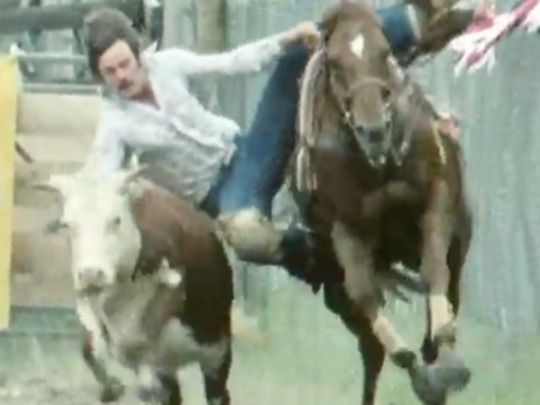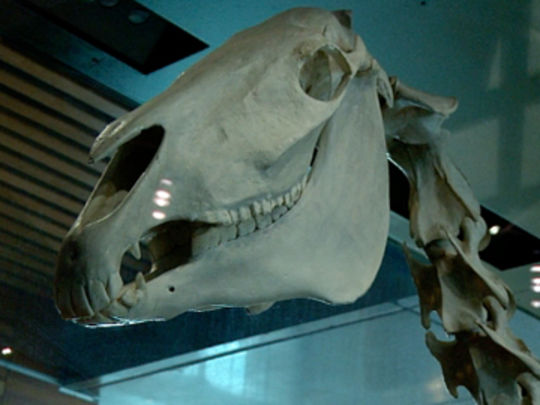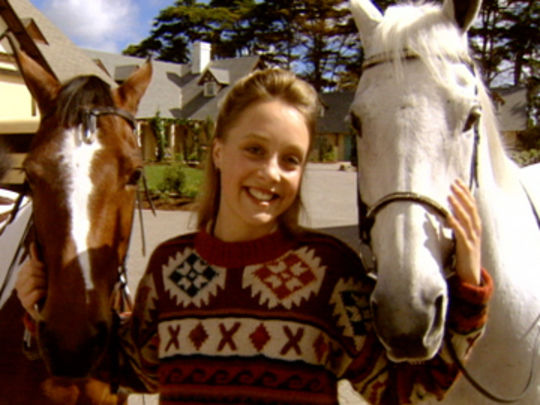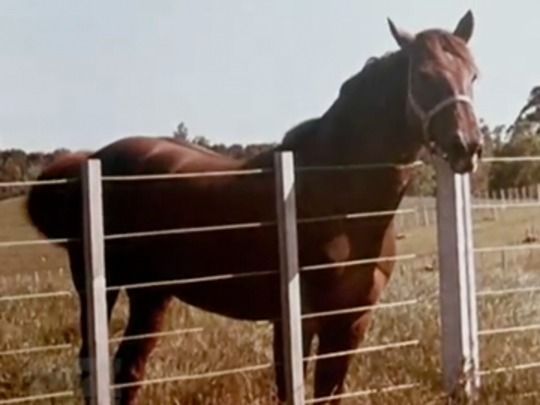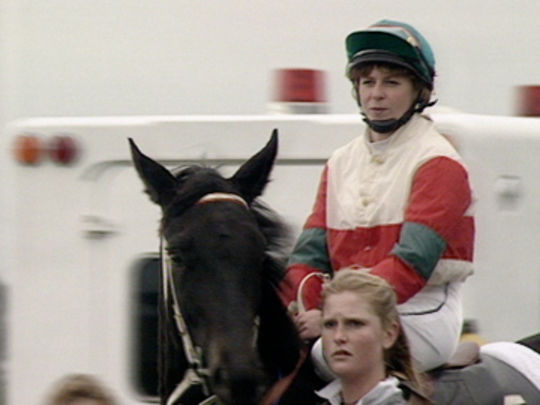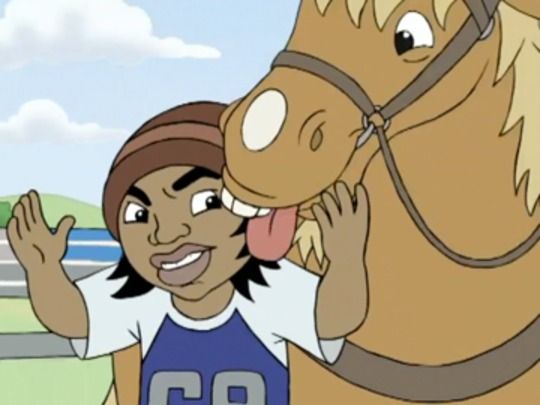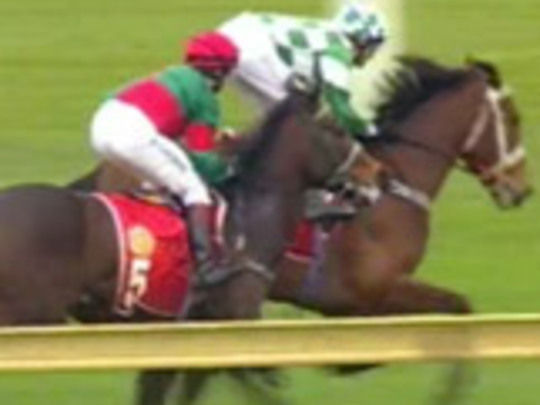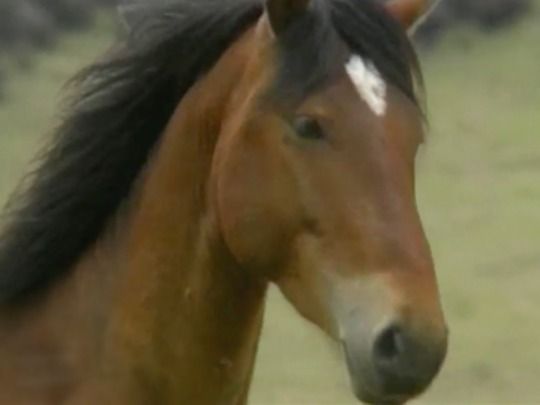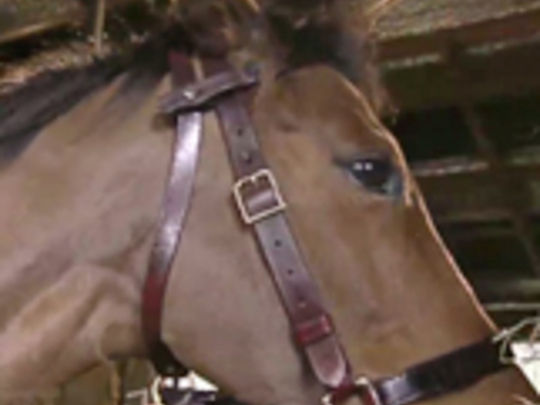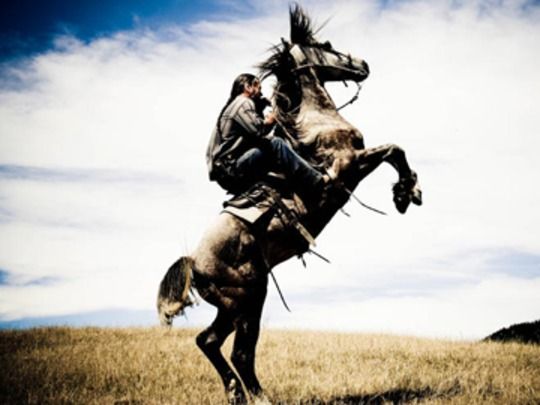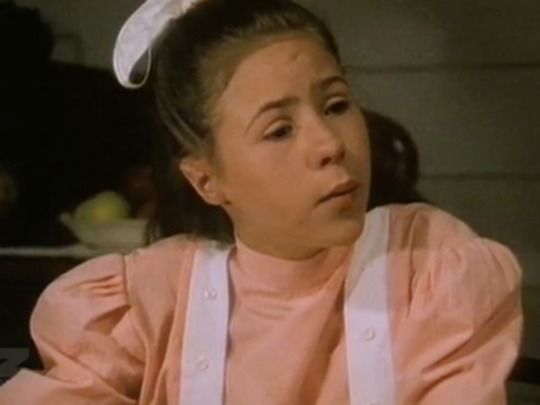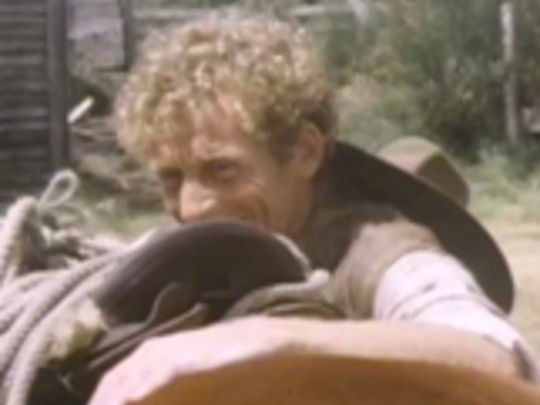The Horse Collection
Four Legs Good
Either in supporting roles in dramas or as the main focus of documentaries, the horses featured in the NZ On Screen Horse Collection show that equines have long been a vital part of life in New Zealand.
They say that New Zealand is a great place to bring up kids. It’s also a great place to bring up horses. The sheep stations of the South Island and the remote East Cape between Gisborne and Opotiki are so renowned for their hardy equines that we’ve even given the horses from these regions their own name. We call them stationbreds or Gisbornebreds. Not a breed in the strictest sense, these horses are recognised as a ‘type’ here in New Zealand, and their bloodlines are highly-sought after for solid, sensible horses that can be used for everything from sheep mustering to Grand Prix showjumping.
My horse Ash is a Gisbornebred. His mum was a pure Thoroughbred mare and his dad was a homebred farm stallion with Dutch Warmblood lines. Ash grew up on the remote hills of Te Karaka, midway between Gisborne and the dark and treacherous Waioeka Gorge. But by the time we met he had moved to Auckland and was living at the Pakuranga Hunt Club Kennels, where he was taken out each day over fences to exercise the hounds.
This summer I took Ash back home to Gisborne for a month. I was finishing off the latest book in the Pony Club Rivals series and I figured a holiday in horse country would be just the inspiration I needed to finish that final draft.
I didn’t do much writing but I rode every day in Gisborne. I rode early each morning at around six because the sun was so hot by nine am that I thought I would faint. If the tides were right, we would head down to Makarori beach and Ash would spook at the seaweed and recoil in terror as the waves came pounding in. If the surf was too high we would hack across the farmland or pop over the showjumps in the arena where we grazed in the valley beside the beach.
My schedule left the daytime free for watching other people ride. We went to the Poverty Bay Polo Club where, unlike Ellerslie, there are no champagne tents or celebrities like Aja Rock in skin-tight frocks or men fussing over getting paddock mud on their Audi TTs. Just a kiosk selling meat pies and fanta and two teams of ponies ridden at full gallop in pursuit of a little white ball, with the players screaming, cursing and barging their way to victory.
When the polo season had finished we went to Wairoa and watched the show-jumping classes at the A&P show. Fiery Grand Prix ponies came belting around the ring over jumps that were so large that the kids on their backs could barely see over the top of them. Old faces like Maurice Beatson, Alan Goodall and Merran Hain – riders who were famous in the 80s when I was just a kid – were still competing and getting clear rounds. Sitting in the sun, admiring the ponies and hacks that had been polished and plaited for the flatwork classes, seeing all those old names on the entry list, it was tempting to think that nothing had changed in the past 30 years since I was a pony club kid back in Ngaruawahia.
But things have changed. In the Gisborne district, where pony clubs were once the backbone of the equestrian community, the numbers of riders and clubs have dwindled away. Due to the lack of pony clubs, most competitions are now registered events. There are no neighbourhood ribbon days and gymkhanas for the kids to attend. The days of rocking up dressed in your trackpants and gumboots, riding bareback on some bush-bred pony, and going home with a smile on your face and a ribbon that you won for coming third in the bending race are over.
“Kids don’t have fun with their riding the way they used to,” one local Gisborne rider told me. “I remember when we were kids we’d do all sorts of crazy stuff. We’d gallop around bareback playing cowboys and Indians on our ponies and tackle each other off their backs and drag each other to the ground. You’d never see that sort of thing now.” Well except in the Karena family in Oscar-longlisted paean to horse-borne freedom, This Way of Life.
When it comes to the way we ride horses here in New Zealand we are no longer ‘rough as guts’ in our approach, (typified by the southern riders using their bronco-riding skills to leap off choppers onto deer in the 70s and 80s). We’ve become refined – more British Horse Society.
But is that is a good thing? When I look back, all the great riders that New Zealand has produced – the ones I idolised when I was a pony club kid – they learned to ride without the benefit of tonnes of dosh, fancy ponies and loads of kit. Vaughn Jeffries, one of New Zealand’s greatest three-day eventers, has told the story of how he started riding at the age of four and spent years without a saddle, as his father refused to stump up and buy him one until he proved his dedication and developed ‘a seat’.
Mark Todd recalls a childhood where he would ride bareback without a bridle, throwing himself onto any horse he could find in his uncle’s paddocks and blatting off on an adventure with his friends.
These days, we do things by the book. We’ve gained the technical skills that are required for riding, but we’ve lost some of that unique number-eight-wire New Zealandness that once made us great.
Looking at some of the films and series on NZ On Screen reminded me of this. There are so many examples in the digital vaults here that speak of how we used to be. In the Heartland documentary where Kerre Woodham goes to the Riverton Races she interviews a female jockey who was plucked from her former life as a waitress in a café and is now riding on the track. Kerre also pops into the local AFFCO for a chat with a bloke spattered in blood from slitting sheep’s throats all day on the line at the works who also trains racehorses on the side and has produced 103 winners.
One of my favourite documentaries is The Promise – Sir Tristram’s Story. I love the way Patrick Hogan adores Sir Tristram, not despite the horse’s nature – which is violent, angry and unpredictable – but rather because of it. Sir Tristram (Paddy to his friends) is not a sweet-natured Disney horse. He is a grumpy, curmudgeonly soul who won’t come out of his paddock unless he is in the mood. And if he’s not in the mood? Well there’s no-one foolish or brave enough to go in after him. If and when Sir Tristram can be coaxed out to service the mares he refuses to mount the ones that are too fat. He tries to kill any foals in his vicinity and to kick and maim his handlers.
There’s a segment where one of his former trackwork jockeys back in the UK explains that the stallion wouldn’t just buck you off – he would then try to attack you once you were on the ground. These are the stories that I love as a fiction writer. Horses, like people, are flawed and difficult. That is what makes them interesting characters. In New Zealand these days, we seem to be polishing the diamonds, but I still like them rough. I guess it’s just the way I was brought up.
- Writer Stacy Gregg has published 30+ children’s books, including popular series Pony Club Secrets and Pony Club Rivals. Her screen credits include Mystic and My Life Is Murder. She saved up for her first pony at age 10.
